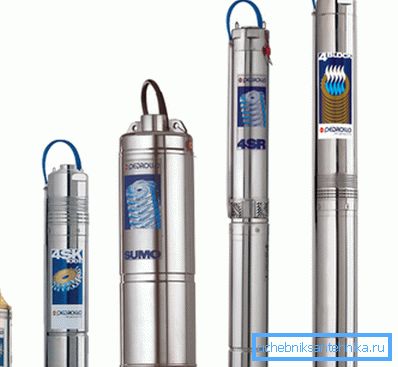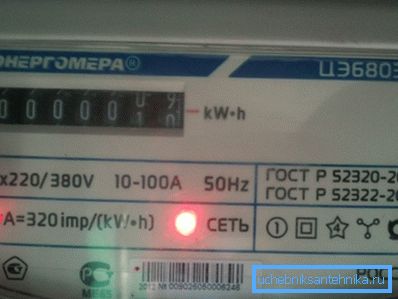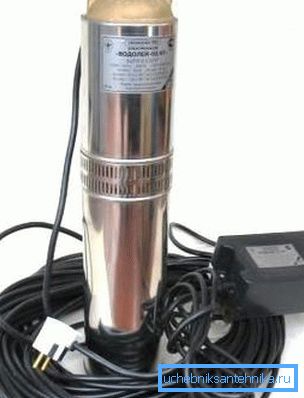Which pump is better for the well: problems of choice
In this article we will try to find out by what signs and properties the submersible pumps differ and which pump is better for the well.
Working conditions
To begin with, let's clearly imagine the conditions in which the well pump is to operate.
- It goes down to the ground to a considerable depth and raises the water column by several tens of meters;

Please note: pumping stations can also be used to lift water from a shallow depth.
In this case, the pump itself remains on the surface, only the water intake hose is lowered into the well.
- At the same time, the required productivity is small, since the debit of a well is usually small (the amount of water it can give);
- The pump will work for years without maintenance. The pump rises from the well extremely rarely, while the water is constantly needed.
Further. The pump is bought for a long time.
What are the costs of raising water from a well for ten years?
- 5 percent - the actual purchase of the pump;
- 10 percent - maintenance of the pump and well;
- 85 percent - the cost of electricity.
So: the pump of our dreams should have a moderate performance, while giving a fairly high excess pressure at the outlet, to be as reliable and economical as possible. (See also the article Cementing wells: how to do it yourself.)

Well parameters
To decide which pump is better for a well, you need to know its basic parameters. What is worth considering?
Well depth
This is the distance from the surface of the earth to the bottom. It is indicated in the documentation issued by the drilling company..
Tip: how to find out the depth of the well, if you purchased it with your home without supporting documentation? Simply simple: lower the lead weight into the well on a long rope. The fact that it has reached the bottom, you will learn by a sharp weakening of the tension. Then measure the rope - a matter of a minute.
Bore pipe diameter
It is clear that the diameter of the pump should not exceed the diameter of the casing of the well.
Static water level
This is the distance between the surface and the mirror of water in the event that the well is not pumped out for a long time..
How to measure it? It will help the same weight. When it is immersed, a distinct splash will be heard. However, it is not difficult to measure the distance from a wet area to the surface on an organic fiber cable.
Well flow rate
This is the amount of water that a well can dispense over time.. It is inextricably linked with the concept of dynamic water level - a level that is established during prolonged pump operation.
Types of pumps
There are two main types of submersible pumps:
- Vibratory;
- Centrifugal.
Vibrating pumps are cheaper; however, they have much lower performance. More importantly, vibration is damaging to the filter, casing, and the walls of the well. If so - this is clearly not our choice.

Selection of the pump diameter
The diameter of the pump must be at least 10 millimeters smaller than the inner diameter of the casing. Do not forget: sooner or later the pump will have to be removed for maintenance.
When choosing, note: the external diameter of the pump is often indicated in inches. Inch is 25.4 millimeters.
Most pumps on the market have an outer diameter of about 4 inches (100 millimeters), which means a casing with an inner diameter of 110 millimeters. (See also the article Features of the replacement of the pump in the well.)

Selection of the pump on the pressure (height of water column)
Here it is worth considering a number of nuances:
- The pump does not fall to the bottom of the well. From the pump to the filter, it is desirable to leave at least one meter distance. In this case, both the filter and the pump itself will be much less clogged with sand and other suspensions.
- However, it is desirable that the pump has sufficient head. Any engines do not like to work at the limit of their capabilities: while their resource is markedly reduced.
- Do not forget that the pump needs not only to raise the water from the well, but also to create excess pressure at the outlet. In fact, the water from the top of the well to the mixer does not flow by gravity.
Based on all these facts, the following simple formula is applied in practice:
H = H1 + 0.2L + 30, where H is the passport column of the pump water, H1 is the distance from the point of the intended location of the pump to the surface, L is the length of the pipe from the house to the well.
For example, for a well located ten meters from the house and with a pump at a depth of 20 meters, you will need a pump with a passport pressure of at least 20 + 10 * 0.2 + 30 = 52 meters. Taking into account the recommended power reserve, it is better to look at models with a pressure of at least 60 meters.

Selection of pump performance
Here it is worthwhile to separate the pumps, which provide a constant supply of water, and pumps to draw water into the tank.
- If the pump is turned on for a short time - let's say a large performance margin. The main thing is that during operation the pump should not be above the water level.
- If the pump provides a constant pressure - its performance must, on the one hand, exceed the peak water flow rate on all plumbing fixtures; on the other hand, to be less than the flow rate.
The latter is important for purely technical reasons: water cools the pump during operation. Working idly, without cooling, the motor will quickly fail.
An approximate calculation of the required performance for providing water to the house can be calculated as follows: simply multiply the number of mixers and other plumbing fixtures by 500 liters per hour. Thus, a house with a washbasin, shower and kitchen requires a performance of 1,500 liters, or 1.5 m3 / hour.
If you want to be safe, you can buy a pump that turns off at idle when it pumps water from a well to its level. Such systems are somewhat more expensive than conventional ones.

Selection of a pump for water quality
Which pump is better for the well depends on the purity of the water. If the water contains a large amount of suspended matter and sand - you should pay attention to the maximum degree of water contamination indicated in the pump passport.
Please note: usually the water is dirtier, contains more suspensions when drilling wells on the sand, which take water from the upper horizons.
Pump selection by manufacturer
It would not be desirable to show patriotism, it is necessary to recognize that imported pumps are more economical and much more reliable.
- The lower price range of a meaningful purchase falls on Ukrainian pumps Aquarius. They are quite good; however, make sure that the inside diameter of the well pipe exceeds 100 millimeters. More is better: with a large depth of the well and an uneven trunk, the pump can still get stuck.

- Of the good Chinese worth noting Taifu Pumps & Motors. However, production has long gone beyond China: these pumps are made all over the world. They are distinguished by very affordable prices with decent quality.
- Finally, from European manufacturers should pay attention to the Italian Pedrollo, German Wilo and Danish Grundfos. They are quite expensive; in this case, you pay not only for the quality, efficiency and resource of the pump, but also for the name of the manufacturer.
Which well pump is better - cheaper or more reliable - you have to decide on your own budget. (See also the article How to equip a well with your own hands.)
Conclusion
We hope that we have provided all the necessary information for the selection. Good luck with your purchase!